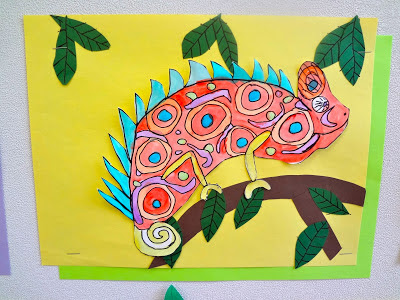I got written up in the local newspaper today for my latest project! It came out in papers today and was well-written and thorough. Read the article here.
The pilot project is almost complete! And I say "almost" because even though our part of the mural is finished, it still has a long way to travel to get to its final destination. I will ship out the mural this weekend. I just got an email from the Peace Corps Volunteer who will receive it for his village. He says:
Hey Corie,
The painted mural looks awesome! We're really lucky to have that coming to Tsivangiana. Last week I met with a group of five mpanentanas (health workers/informers) there. We plan to use the mural to launch a week of malaria trainings - on bed nets (we're going to go house by house and check bed net usage, take pictures of people there doing it right and wrong, and put these next to the mural as examples - like a Wall of Bed Net Fame) and on making Neem Cream (a natural bug repellant). We haven't yet finalized the programme/dates but we're looking at maybe the last week in January. I will let you know. The ladies (the mpanentanas) are really mazoto (diligent) so I think it's going to be great. We'll try to get the most out of this great mural you all have made! And yes we'll make sure to send you all lots of pics.
Thanks,
Eddie
So awesome!! I feel overwhelmed with... I guess the word is satisfaction. It's the same feeling as when I've had a painting in my head for ages, finally paint it, and it comes out just right or better than I imagined. I dare say, I feel proud of myself. I also feel very grateful to those who helped me get all this together. My whole Peace Corps family was so willing to jump in and help: other volunteers, my former supervisor and language teachers there. My expert muralists I learned this cloth-mural technique from over the summer at my internship with the Philadelphia Mural Arts Program. My friends and family here listened to me and helped me sort through ideas. Thank you all so much!!!
The pilot project went great. Now it's sort of like, what's the next logical step for this thing? I hope to do more of these with more schools in Eugene and Portland (next school year). Then, who knows..... maybe someday this can become my J.O.B. through some big health organization (COUGH*Population Services International*COUGH) so kids in the U.S. can make health murals for places all over Africa or the rest of the developing world. For now, I'm reveling in my first victory. But.... "Dream Big", right?
I'll leave you with some visuals:
So awesome!! I feel overwhelmed with... I guess the word is satisfaction. It's the same feeling as when I've had a painting in my head for ages, finally paint it, and it comes out just right or better than I imagined. I dare say, I feel proud of myself. I also feel very grateful to those who helped me get all this together. My whole Peace Corps family was so willing to jump in and help: other volunteers, my former supervisor and language teachers there. My expert muralists I learned this cloth-mural technique from over the summer at my internship with the Philadelphia Mural Arts Program. My friends and family here listened to me and helped me sort through ideas. Thank you all so much!!!
The pilot project went great. Now it's sort of like, what's the next logical step for this thing? I hope to do more of these with more schools in Eugene and Portland (next school year). Then, who knows..... maybe someday this can become my J.O.B. through some big health organization (COUGH*Population Services International*COUGH) so kids in the U.S. can make health murals for places all over Africa or the rest of the developing world. For now, I'm reveling in my first victory. But.... "Dream Big", right?
I'll leave you with some visuals:
 |
| This was the original mural design. The folks in the village in Madagascar will be the ones to finish the border and the words in Malagasy, explaining each panel. |
Thanks for reading,
Corie




























